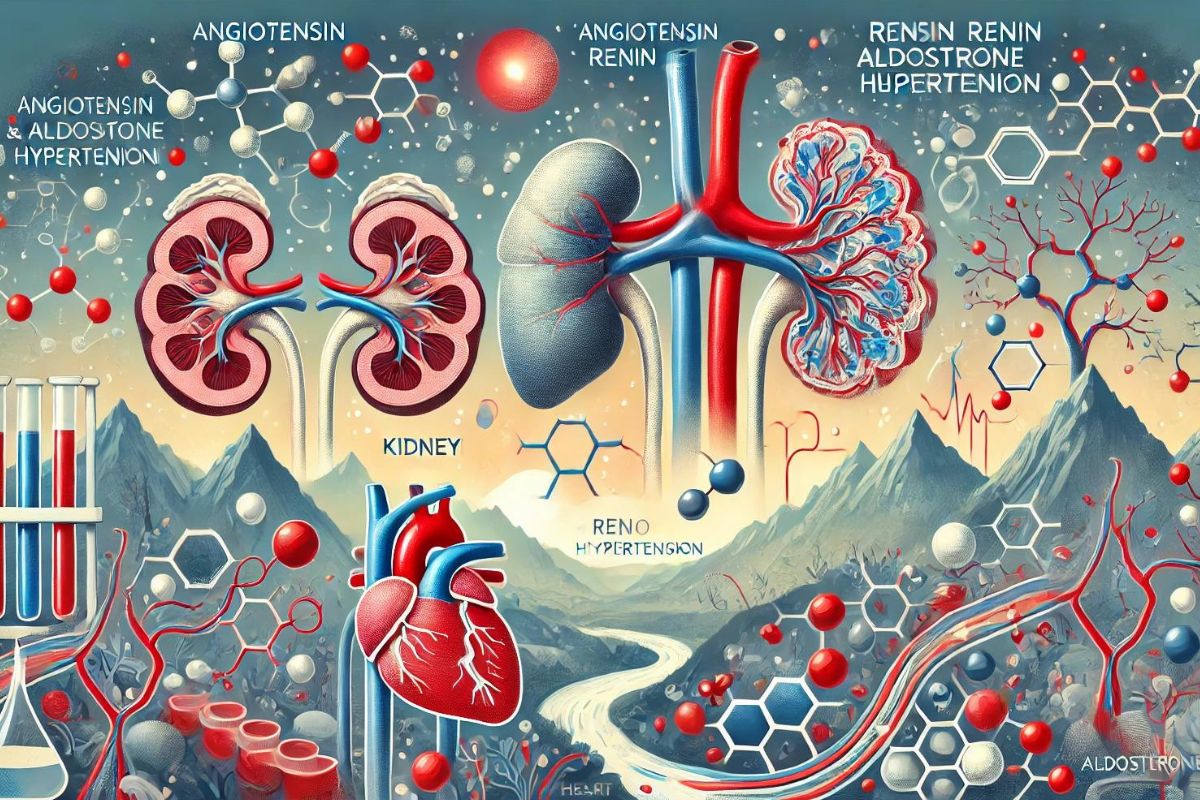
What is Angiotensin Renin Aldosterone Hypertension? This mouthful of a term refers to a complex system in your body that helps regulate blood pressure. Angiotensin and renin are hormones, while aldosterone is a steroid hormone. Together, they form the Renin-Angiotensin-Aldosterone System (RAAS). When blood pressure drops, renin gets released from the kidneys. This triggers a chain reaction, producing angiotensin, which narrows blood vessels, and aldosterone, which makes kidneys retain sodium and water. The result? Blood pressure rises. Hypertension occurs when this system goes haywire, causing consistently high blood pressure. Understanding this system can help manage and treat high blood pressure effectively.
Understanding Angiotensin Renin Aldosterone System (RAAS)
The Angiotensin Renin Aldosterone System (RAAS) plays a crucial role in regulating blood pressure and fluid balance. This system involves a series of hormones and enzymes that work together to maintain homeostasis in the body. Let's dive into some fascinating facts about RAAS and its connection to hypertension.
-
RAAS Components: The RAAS includes renin, angiotensin, and aldosterone. Each component has a specific function in regulating blood pressure and fluid balance.
-
Renin Release: Renin is an enzyme released by the kidneys in response to low blood pressure or low sodium levels. It initiates the RAAS cascade.
-
Angiotensinogen Conversion: Renin converts angiotensinogen, a protein produced by the liver, into angiotensin I.
-
Angiotensin I to II: Angiotensin I is converted to angiotensin II by the angiotensin-converting enzyme (ACE), primarily in the lungs.
-
Vasoconstriction: Angiotensin II causes blood vessels to constrict, leading to increased blood pressure.
Role of Aldosterone in RAAS
Aldosterone, a hormone produced by the adrenal glands, is a key player in the RAAS. It helps regulate sodium and potassium levels, which in turn affects blood pressure.
-
Sodium Retention: Aldosterone promotes sodium retention in the kidneys, which helps increase blood volume and pressure.
-
Potassium Excretion: It also promotes the excretion of potassium, maintaining electrolyte balance.
-
Water Retention: By retaining sodium, aldosterone indirectly causes water retention, further increasing blood volume.
-
Adrenal Glands: The adrenal glands, located on top of the kidneys, produce aldosterone in response to signals from angiotensin II.
-
Feedback Loop: The RAAS operates through a feedback loop, where increased blood pressure inhibits further renin release.
Hypertension and RAAS
Hypertension, or high blood pressure, is often linked to an overactive RAAS. Understanding this connection can help in managing and treating hypertension.
-
Primary Hypertension: In many cases, primary hypertension is associated with an overactive RAAS, leading to persistent high blood pressure.
-
Secondary Hypertension: Conditions like kidney disease can cause secondary hypertension by disrupting the RAAS.
-
ACE Inhibitors: Medications known as ACE inhibitors block the conversion of angiotensin I to angiotensin II, helping to lower blood pressure.
-
ARBs: Angiotensin II receptor blockers (ARBs) prevent angiotensin II from binding to its receptors, reducing its effects on blood pressure.
-
Aldosterone Antagonists: These drugs block the action of aldosterone, helping to reduce sodium retention and lower blood pressure.
RAAS and Fluid Balance
The RAAS is not only crucial for blood pressure regulation but also for maintaining fluid balance in the body.
-
Dehydration Response: During dehydration, the RAAS is activated to conserve water and maintain blood pressure.
-
Blood Volume Regulation: By controlling sodium and water retention, the RAAS helps regulate blood volume.
-
Heart Failure: In heart failure, the RAAS can become overactive, leading to fluid retention and worsening symptoms.
-
Edema: Excessive activation of the RAAS can cause edema, or swelling, due to fluid accumulation in tissues.
-
Diuretics: Diuretics are medications that help reduce fluid retention by promoting urine production, often used in conjunction with RAAS inhibitors to manage hypertension and heart failure.
Final Thoughts on Angiotensin Renin Aldosterone Hypertension
Understanding angiotensin renin aldosterone hypertension can be a game-changer for managing blood pressure. This system plays a crucial role in regulating blood volume and systemic vascular resistance, which directly impacts hypertension. Knowing how angiotensin II and aldosterone work helps in grasping why certain medications, like ACE inhibitors and ARBs, are effective. These drugs block the actions of angiotensin II, leading to lower blood pressure and reduced strain on the heart. Lifestyle changes, such as a balanced diet and regular exercise, also contribute significantly to controlling hypertension. Staying informed about how this system functions empowers individuals to make better health choices. Always consult healthcare professionals for personalized advice. By keeping these facts in mind, managing hypertension becomes less daunting and more achievable.
Was this page helpful?
Our commitment to delivering trustworthy and engaging content is at the heart of what we do. Each fact on our site is contributed by real users like you, bringing a wealth of diverse insights and information. To ensure the highest standards of accuracy and reliability, our dedicated editors meticulously review each submission. This process guarantees that the facts we share are not only fascinating but also credible. Trust in our commitment to quality and authenticity as you explore and learn with us.


